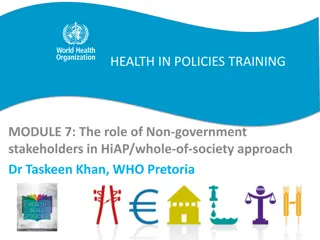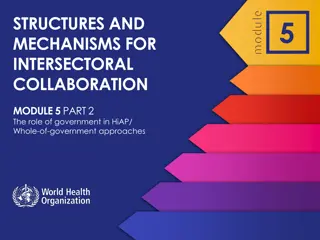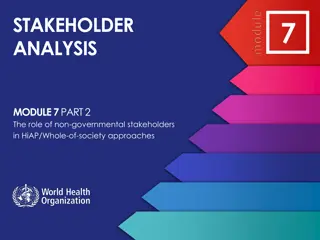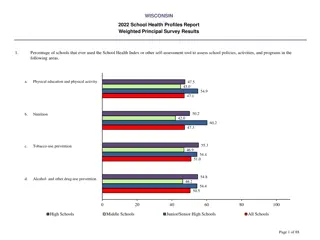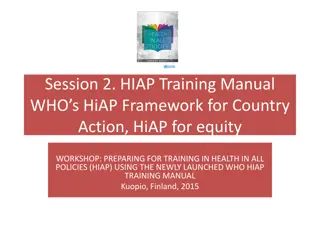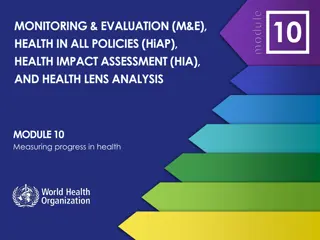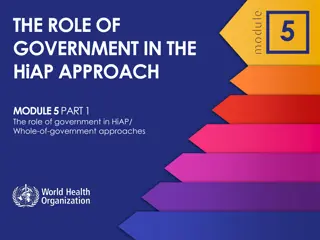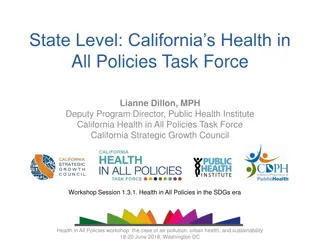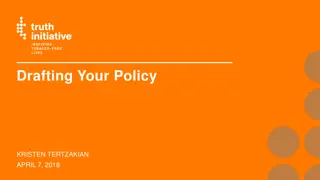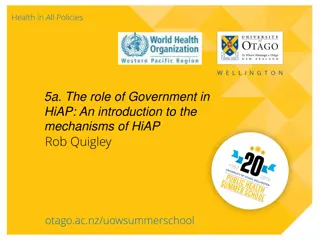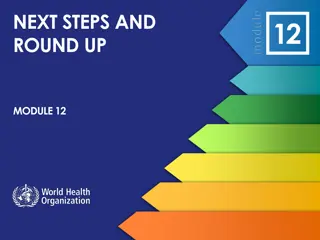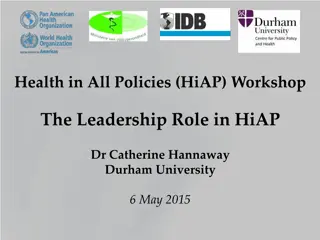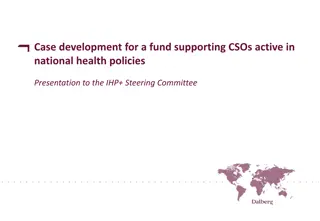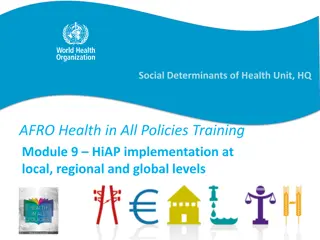Understanding Health in All Policies (HiAP) Approach
Governments worldwide are adopting whole-of-government strategies like Health in All Policies (HiAP) to tackle complex issues affecting public health and equity. This course aims to enhance participants' knowledge and skills in promoting, implementing, and evaluating HiAP, fostering cross-sector collaboration, and advocating for policy change. Participants will gain insights into the importance of considering health implications in decision-making processes across various sectors and levels of governance.
Download Presentation

Please find below an Image/Link to download the presentation.
The content on the website is provided AS IS for your information and personal use only. It may not be sold, licensed, or shared on other websites without obtaining consent from the author. Download presentation by click this link. If you encounter any issues during the download, it is possible that the publisher has removed the file from their server.
E N D
Presentation Transcript
OUTLINE OF COURSE STRUCTURE AND LEARNING OBJECTIVES: GETTING STARTED 1 MODULE 1 PART 1 Introduction and the Determinants of Health
WELCOME AND INTRODUCTIONS 1 House-keeping Expectations Getting to know each other Motivation for attending the course What sector you work in Experience in implementing HiAP
PURPOSE OF THE COURSE 1 THIS COURSE AIMS TO: Build capacity to promote, implement and evaluate HiAP; Encourage participants to engage and collaborate across sectors; Facilitate the exchange of experiences and lessons learned; Promote regional and global collaboration on HiAP; and Give participants the knowledge and confidence to become a policy champion or policy entrepreneur.
PARTICIPANT OUTCOMES 1 AT THE END OF THE COURSE, PARTICIPANTS WILL: Have an increased knowledge and understanding of the HiAP approach and when it should be used Have learnt about the conditions that favour HiAP Have considered how health policy- makers can most effectively engage and negotiate with other stakeholders Have been exposed to how health issues get placed on the political and policy agenda Have had an opportunity to consider what motivates politicians and policy-makers across sectors to take into account the health consequences of their policies Have identified the best ways to monitor HiAP efforts and progress.
1 STRUCTURE OF THE COURSE Structure and timetable of the course Participatory approach to learning and group work Pre-course reading Learning objectives Participant evaluation
WHY HEALTH IN ALL POLICIES (HiAP) MATTERS? 1 Governments are increasingly looking for whole-of-government approaches to address wicked policy problems such as obesity and climate change, and to work across sectors to develop joined-up policy solutions. 1 Public policies and decisions made in all sectors and at different levels of governance can have a significant impact on population health and health equity. 2
WHY HEALTH IN ALL POLICIES (HiAP) MATTERS? 1 Action for health requires intersectoral action: 3 Many of the determinants of health and health inequities in populations have social, environmental and economic origins that extend beyond the direct influence of the health sector and health policies. HiAP provides a means to identify and avoid the unintended impacts of public policy that can be detrimental to the health of populations or subgroups of the population; therefore reducing risk. 4
1 BECOME A POLICY CHAMPION Policy champions and policy entrepreneurs are crucial to the HiAP approach. A person or team willing and able to lead and manage the policy process. Entrepreneurial policy-makers are able to break with habits, transcend boundaries and initiate new policies. Their creative acts have transformative effects on politics, policies and institutions.
End of Module 1 Part 1 Please continue to Module 1 Part 2





